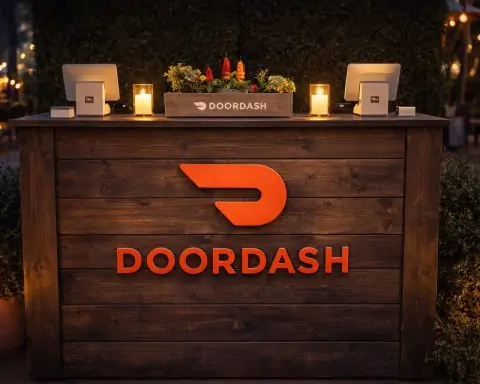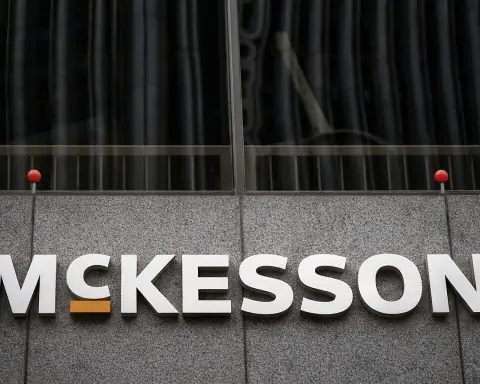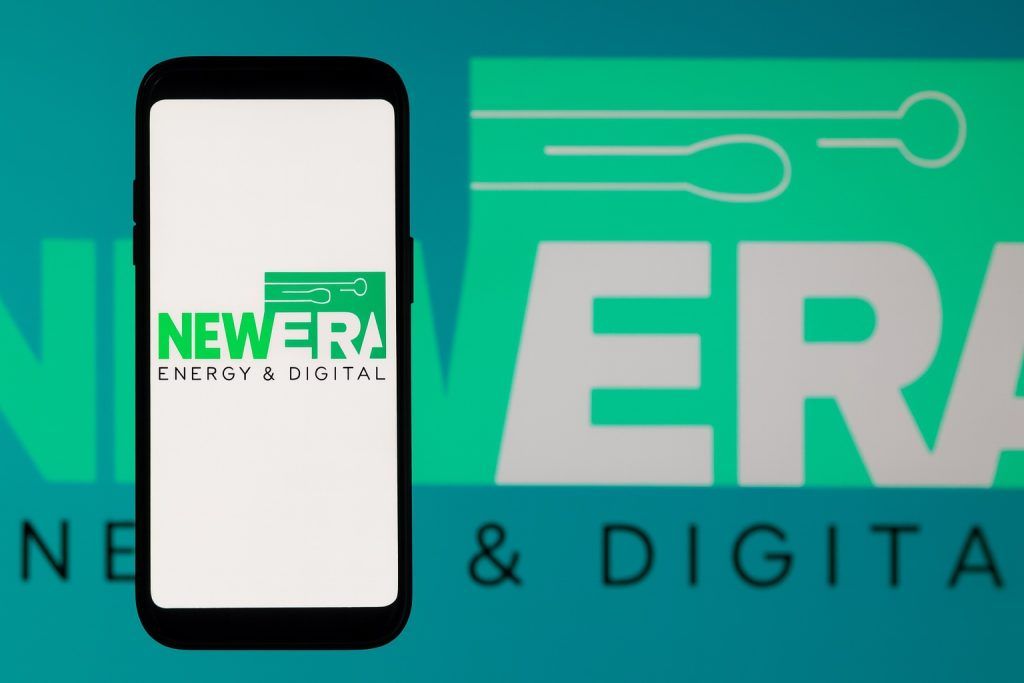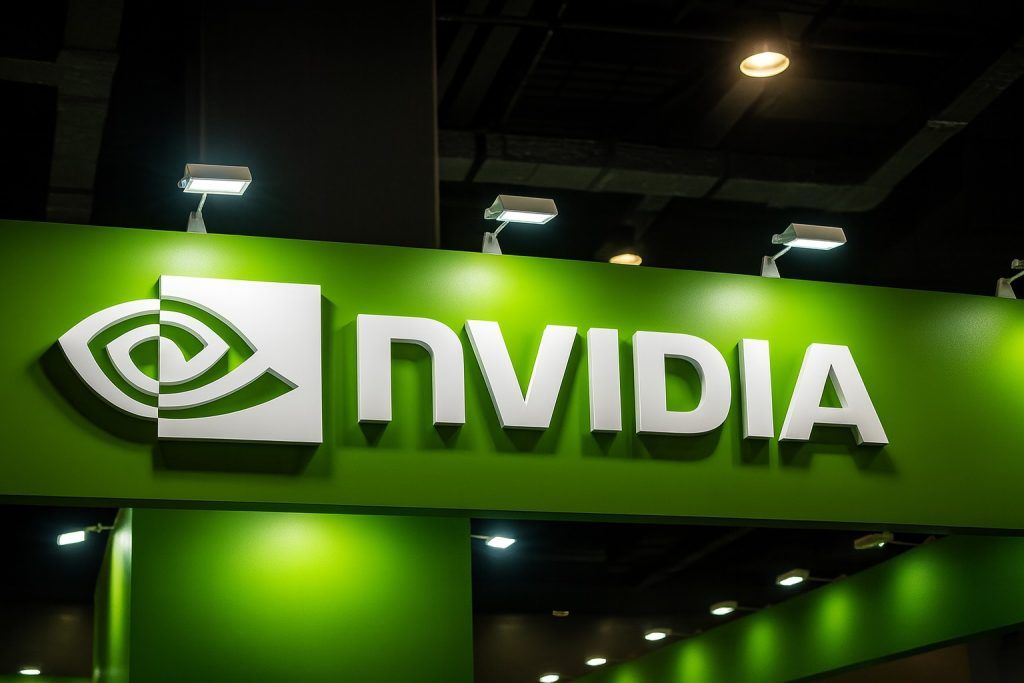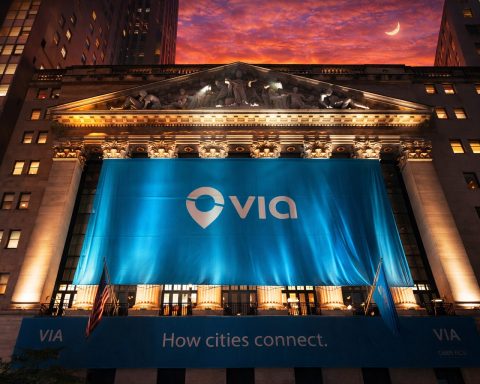- Earnings Surge: DraftKings’ Q2 2025 revenue jumped 37% YoY to $1.51B, with record adjusted EBITDA of $301M [1]. The company reiterated full-year 2025 guidance ($6.2–6.4B revenue; $800–900M EBITDA) [2]. Shares popped about 4% after the results [3].
- Prediction Markets Pivot: On Oct. 21, DraftKings announced it will buy CFTC-licensed Railbird Technologies to launch a new “DraftKings Predictions” app for trading regulated event contracts [4] [5]. The move extends DraftKings beyond sports betting into broader prediction markets; the stock climbed roughly 2% on the news [6]. CEO Jason Robins said the deal “positions us to win in this incremental space” [7].
- Major Partnerships: The company struck a landmark advertising partnership with NBCUniversal (announced Sept. 29). DraftKings gains exclusive integrations and sponsorships across NBC’s top sports properties – NFL, NBA, NCAA, PGA Tour, Premier League and marquee events (Super Bowl LX, NBA All-Star, 2026 World Cup) [8] [9]. NBCSports VP Peter Lazarus hailed DraftKings as “there is no better company to integrate into our unrivaled portfolio,” promising this will “transform the viewer experience” [10].
- Stock & Sentiment: DKNG stock slid roughly 20–40% from its summer highs into October amid concerns about new competitors [11] [12]. Berenberg upgraded DraftKings to “Buy” on Oct. 9, calling the recent sell-off “excessive” and citing no fundamental damage to DKNG’s core business [13] [14]. Cathie Wood’s ARK fund added to its position (buying ~236,300 shares) [15], signaling renewed investor confidence.
- Industry Context: Regulated prediction markets are booming. Startups Kalshi and Polymarket have drawn Wall Street (ICE’s $2B Polymarket investment [16]) and even partnered with leagues (the NHL inked deals with both Kalshi and Polymarket on Oct. 22, the first U.S. league to do so [17]). These platforms are widely seen as a “competitive challenge and a regulatory dilemma” for traditional sportsbooks [18] [19], which pressured DraftKings’ stock earlier in the month.
Record Revenue, Rising Margins Drive Optimism
In early August, DraftKings reported blowout Q2 results – revenue of $1.51 billion (up 37% YoY) and adjusted EBITDA of $301 million, more than double the prior record [20]. Management noted strong sportsbook hold and growth in monthly active users. CEO Jason Robins said, “We set records for revenue, net income and Adjusted EBITDA in the second quarter” [21]. The company reaffirmed its full-year outlook, expecting to hit the high end of $6.2–6.4B revenue and roughly $850M EBITDA [22]. The upbeat results lifted DraftKings shares (they rose ~4% immediately after release [23]) and helped narrow the gap with archrival FanDuel (owner Flutter).
Investor sentiment has bounced between excitement and caution. The summer rally gave way to a late-September swoon: DKNG’s stock tumbled over 20% as fears grew about new competitors (see below). Many analysts trimmed price targets – for example, Susquehanna’s Joe Stauff noted the industry is entering a “more mature and competitive phase” where profitability matters more than raw growth [24]. But the early October Berenberg upgrade argued that fears were overblown. Berenberg analysts wrote that they saw “no fundamental change in demand” or “impact on numbers so far” from prediction-market entrants [25], and they maintained a strong revenue/EBITDA forecast. DraftKings’ stock rallied on that news.
Prediction Markets: New Frontier for DraftKings
Facing rising competition, DraftKings is doubling down on the next big betting frontier: prediction markets. On Oct. 21 the company announced it will acquire Railbird Technologies, a CFTC-regulated exchange for event contracts [26]. This gives DraftKings an instant federal license and tech to launch “DraftKings Predictions,” a mobile app where users can trade yes/no contracts on events in finance, culture, entertainment and politics [27]. Robins told analysts they are “excited about the additional opportunity that prediction markets could represent,” and that combining Railbird’s platform with DraftKings’ scale “positions us to win in this incremental space” [28].
DraftKings’ stock ticked upward on the news, reflecting investor approval. TS2 Tech reports shares “nudged higher about 2%” after the Railbird announcement [29]. The move is widely seen as a defensive play. Startups like Kalshi and Polymarket – both federally regulated – have dramatically expanded into sports and other event markets, attracting eye-popping funding and user volume [30] [31]. One TS2 analysis noted that DraftKings’ stock had “slid nearly 40% from its 2025 peak” amid such concerns [32]. In early October a short-seller warned that Wall Street may be “downplaying the tectonic shift” these prediction platforms pose to sportsbooks [33]. By buying Railbird, DraftKings aims to turn that competitive threat into a new product line, potentially extending its addressable market.
The regulatory landscape around prediction markets is complex. Federal regulators now treat event contracts as derivatives under CFTC oversight, but many state gaming regulators still view them skeptically. TS2 notes that state officials in places like Massachusetts sued Kalshi for running sports betting without a license [34]. Kalshi responded by suing state regulators elsewhere, asserting federal preemption [35]. DraftKings’ Railbird acquisition sidesteps much of this fight by using a CFTC-approved platform. Still, observers have called the rise of prediction betting a “regulatory dilemma” [36] – one reason that some analysts argued the market overreacted to the news of these new competitors [37].
Landmark NBCUniversal Partnership
Meanwhile, DraftKings has been ramping up its marketing muscle. In late September it announced a multi-year ad partnership with NBCUniversal [38]. Under this deal, DraftKings will have exclusive betting integrations across NBC Sports’ entire portfolio – covering NFL games, NBA broadcasts, NCAA football and basketball, PGA Tour coverage, Premier League soccer, WNBA and more [39] [40]. The agreement even includes marquee events: the upcoming Super Bowl LX, NBA All-Star Weekend, and the 2026 World Cup on Telemundo [41] [42]. DraftKings will receive prominent on-air and digital exposure (and will pay NBC for advertising slots) in categories ranging from sports betting and iGaming to fantasy and lottery products [43] [44].
NBC executives were effusive about the tie-up. NBC Sports executive Peter Lazarus said, “DraftKings has dominated the sports betting market…There is no better company to integrate into our unrivaled portfolio of sports properties,” adding that combining NBC’s “excellence in sports entertainment” with DraftKings’ capabilities “will transform the viewer experience” [45]. DraftKings CMO Stephanie Sherman likewise praised it as a “landmark” deal marrying “two industry leaders” to engage fans in new ways [46]. The market reaction was positive: media reports noted this deal’s sheer scale (covering dozens of sports programs across TV and Peacock streaming) and its potential to keep DraftKings top-of-mind for bettors.
This NBC agreement is part of a broader trend of sports-media tie-ins. DraftKings already partners with Warner Bros. Discovery (Turner, TNT) and even holds naming rights to the Dallas Mavericks’ arena. By contrast, its competitors have mixed outcomes: FanDuel’s earlier deal with ESPN fizzled (Penn spun off from ESPN Bet), and Fanatics’ NFL betting launch in 2024 shows new entrants still gaining ground. The new NBCU pact ensures DraftKings remains front-and-center during NFL games and other big events, arguably strengthening its brand at a time of tight competition.
Sports-Betting Industry Trends
DraftKings sits atop a still-growing U.S. sports-betting market. As of 2025, roughly 30 states (plus DC) allow legal online sports betting [47] [48]. Industry handle (the total bets placed) has been buoyed by NFL and college football seasons, though companies note some churn if results or margins sour. In DraftKings’ case, Q2 saw sportsbook revenue up 45% and live (in-game) wagering up 16% [49]. The company is also expanding iGaming (online casino) in states like New York and Pennsylvania, and plans to launch mobile sports betting in Missouri later in 2025 [50].
However, industry analysts caution that the “easy growth” phase is waning. With user acquisition slowing, firms are focusing on profitability and efficiency. As Deadspin noted, with intense competition, “analysts are beginning to focus more closely on profitability and margin stability” rather than unchecked market share [51]. Promotions and bonuses may be scaled back. Indeed, after Sprint runs above and beyond, price targets on both DraftKings and Flutter (FanDuel’s parent) were trimmed by Susquehanna analysts in recent weeks [52].
On the technology front, new betting formats are hot. Aside from prediction markets, exchanges like Betfair and Europe’s regulated futures are being eyed. States like Tennessee have introduced legal in-play betting (betting on events as they happen). And daily fantasy sports remains a steady foundation. DraftKings continues to invest in product features – integrating artificial intelligence to personalize recommendations (as management hinted on its call), and upgrading its back-end for faster in-play payouts. While these details weren’t in recent headlines, they contribute to an overall bullish narrative: DraftKings is leveraging its tech to stay competitive against both traditional casinos and fintech platforms.
Legal and Regulatory Outlook
DraftKings’ regulatory situation is stable. It operates sportsbooks under licenses in 28+ U.S. states and Ontario (Canada) [53], along with iGaming in several states. Unlike unregulated offshore sites, DKNG’s business is fully above-board. The main legal questions now involve the new prediction-market arena. Railbird’s CFTC license means DraftKings’ prediction app should be compliant federally. But state-level concerns persist: legislators and regulators are still debating whether these event contracts amount to gambling under state law. If states like Massachusetts or New York move to restrict Kalshi-style betting, DraftKings’ regulated model could gain an edge (since Railbird is already federally approved).
On another front, Congress has entertained bills like the SALT Act (related to sports betting data rights) and the SAFE Act (poker legalization) – but these have seen limited action. No major federal gaming laws passed in 2025, so DraftKings’ expansion remains mostly at the state level. It watches states like Louisiana (which launched iLottery), Ohio (where sports betting goes live later this year), and others for new opportunities. For now, regulatory risks seem manageable: DraftKings’ aggressive lobbying and existing league partnerships keep it in good stead. The prediction-market developments will be the key legal battleground: if regulators clamp down, Railbird could help DraftKings adapt by offering new CFTC-compliant products (like futures on elections or economic indicators).
Competitive Landscape
In the U.S., DraftKings’ main direct competitor is FanDuel, owned by Ireland’s Flutter Entertainment. Together they hold roughly two-thirds of the online sports-betting market. Other rivals include BetMGM (MGM Resorts/Entain) and Caesars, but none have DraftKings’ digital-first scale. Newcomers are pressing – Fanatics Betting & Gaming (backed by MLB) launched an NFL app this fall, and PointsBet was absorbed by Fanatics in mid-2023.
Against this backdrop, DraftKings’ strategy is to diversify. Its move into prediction markets and deep media partnerships may differentiate it. As one NBC insider put it, DraftKings “dominated” the market and continues to innovate [54]. Skeptics still point to rising marketing costs and regulatory unknowns. Short-seller Spruce Point recently projected a 35–60% downside for DraftKings, warning that future competition could be underestimated [55]. But if DraftKings can effectively integrate prediction markets (turning a perceived threat into business) and capitalize on its strong brand deals, analysts like those at Berenberg believe the stock has more room to recover.
Outlook: With Q2 beating estimates and big strategic moves lined up, many investors see October’s downturn as a buying opportunity. DraftKings’ long-term prospects hinge on sports betting’s continued legalization (now trending up) and the company’s ability to offer fresh products. For now, the latest expert commentary is mixed but hopeful. A Wall Street trader recently commented, “The upgrade to Buy suggests analysts think the worst is behind DraftKings – if they can prove the prediction market fears were overblown, shares could find a firm footing” [56]. Time will tell if the Railbird gamble and NBC media blitz pay off in sustained growth.
Sources: Company filings and press releases [57] [58]; financial news and analyst reports [59] [60] [61]; TS2.Tech market coverage [62] [63]; industry commentary [64] [65].
References
1. www.investing.com, 2. www.investing.com, 3. www.investing.com, 4. www.draftkings.com, 5. www.draftkings.com, 6. ts2.tech, 7. www.draftkings.com, 8. www.globenewswire.com, 9. awfulannouncing.com, 10. awfulannouncing.com, 11. ts2.tech, 12. markets.financialcontent.com, 13. markets.financialcontent.com, 14. markets.financialcontent.com, 15. www.gurufocus.com, 16. ts2.tech, 17. ts2.tech, 18. ts2.tech, 19. ts2.tech, 20. www.investing.com, 21. www.investing.com, 22. www.investing.com, 23. www.investing.com, 24. deadspin.com, 25. markets.financialcontent.com, 26. www.draftkings.com, 27. www.draftkings.com, 28. www.draftkings.com, 29. ts2.tech, 30. ts2.tech, 31. ts2.tech, 32. ts2.tech, 33. ts2.tech, 34. ts2.tech, 35. ts2.tech, 36. ts2.tech, 37. markets.financialcontent.com, 38. www.globenewswire.com, 39. www.globenewswire.com, 40. awfulannouncing.com, 41. www.globenewswire.com, 42. awfulannouncing.com, 43. www.globenewswire.com, 44. awfulannouncing.com, 45. awfulannouncing.com, 46. www.globenewswire.com, 47. awfulannouncing.com, 48. rg.org, 49. www.investing.com, 50. www.investing.com, 51. deadspin.com, 52. deadspin.com, 53. www.draftkings.com, 54. awfulannouncing.com, 55. markets.financialcontent.com, 56. markets.financialcontent.com, 57. www.draftkings.com, 58. www.globenewswire.com, 59. www.investing.com, 60. markets.financialcontent.com, 61. ts2.tech, 62. ts2.tech, 63. ts2.tech, 64. awfulannouncing.com, 65. deadspin.com

